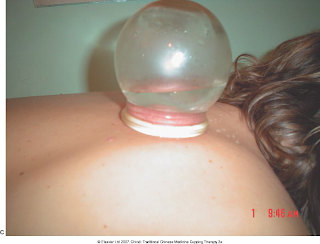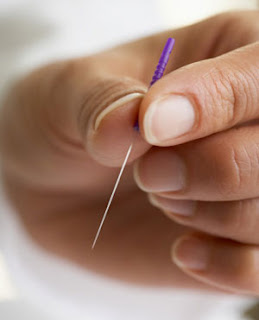11 Methods of Cupping 2
Moving cupping
The objective of this treatment is to apply strong cupping to a much larger area of the body by the
moving/sliding action of the cup. This is the most painful cupping method and is often not practiced in
Tibb.
Light moving cupping
Light moving cupping is practiced mainly on patients with relatively full/excessive energy. It is useful
and considered the only safe method in the management of lymphatic drainage as well as being the
exclusive cupping method in the management of cellulite complaints. During the application, slight
pinkish cupping marks appear on the skin, normally following the direction and movement of the cup.
At no time should deep, dark red cupping marks be seen. All cupping marks should fade away in a day
or two. The whole objective of light cupping is to disperse stasis or stagnation without draining the
patient. All moving cupping should require special attention particularly when the skin surface is
broken, e.g. scratches, cuts, bruises, open wounds, etc.
Avoid cupping over skin moles.
Needle cupping and Moxa (hot needle) cupping
Not often practiced in Tibb as it follows acupuncture treatment. The cup is placed over the inserted
acupuncture needle.
Empty (flash) cupping
Empty cupping is also called flash cupping for its speed during application. This is actually medium to
strong cupping applied rapidly i.e. the cups remain in place for a very short period (<30 seconds). It is
used to stimulate and move blood and energy in the weak and frail. The short duration is enough to
stimulate physis and move blood but not enough to drain the patient. This can be repeated for between
5-10 minutes.
Full (bleeding/wet) cupping
This is the most favored and practiced method by practitioners. It is used in the treatment of a sudden
increase in blood pressure, high fevers, blood stasis and in discharging pus from boils. This method is
often combined with strong cupping. After the initial strong cupping, the cup is removed and slight
superficial lacerations are made. The cup is then placed back on the site. Most of the blood in the cup
will be semicoagulated and therefore still quite fluid. Before removing the cup, the practitioner should
wear disposable surgical gloves on both hands. Remove the cups gentle. It is not recommended to bleed
the patient more than once a month and not to draw more than 100ml of blood at any one time.
Herbal cupping
For this method one requires a few bamboo cups, a relatively deep pan, water, metal clamps, some form
of fire and herbs based in a prescription based on
the treatment. The cups are boiled in the pan with
water and the prescribed herbs. The cups are then
placed on the patient in the traditional way using
(Flame). The herbs are absorbed into the bamboo
cups, which in turn transfer their healing
properties to the patient. Cups can be left on for
10-20 minutes.
Precaution: following the boiling process, some
steam remains inside the cup, resulting in a pressure build-up which pushes the cup away from the skin.
This can be rectified by resting the hot bamboo cups on a dry towel for up to a minute in order to absorb
excess water and at the same time reducing the pressure inside the cup.
Water cupping
This is one of the least used and practiced cupping methods. The technique involves filling a glass or
bamboo cup one-third full with warm water and employing the cupping process quickly. Hold the cup
close to the patient with one hand, bring it close to the point to be cupped and insert the burning cotton
wool, swiftly and simultaneously turning the cup onto the skin. This method is said to disperse energy
and resolve phlegm making it very beneficial for asthma, particularly in children. There is usually no
mark left with this method.
How often can cupping be applied?
Children under the age of 16 - once a week is considered the acceptable frequency. Adults under the age
of 60 - as much as twice a week (with the exception of wet cupping)
Adults over the age of 70 – once a week
However, during the ‘acute stage’ of a disease, treatment TDS or even once every day can be beneficial.
Similarly, in all age groups when light, empty or light moving cupping is employed, treatment frequency
can be increased to as much as once every other day. This is because blood, energy and the lymphatic
fluids are gently stimulated rather than forcefully manipulated.




Comments
Post a Comment